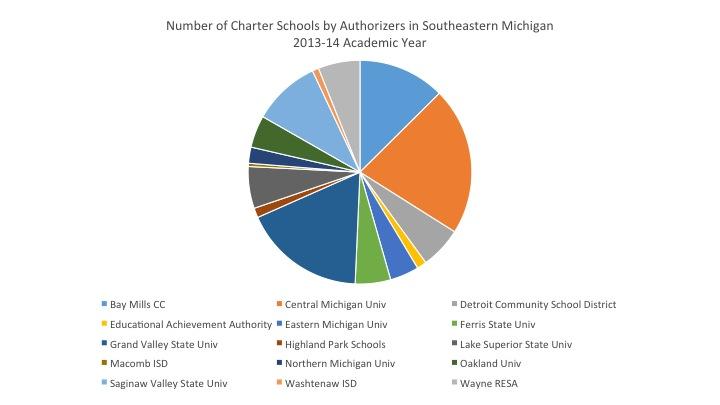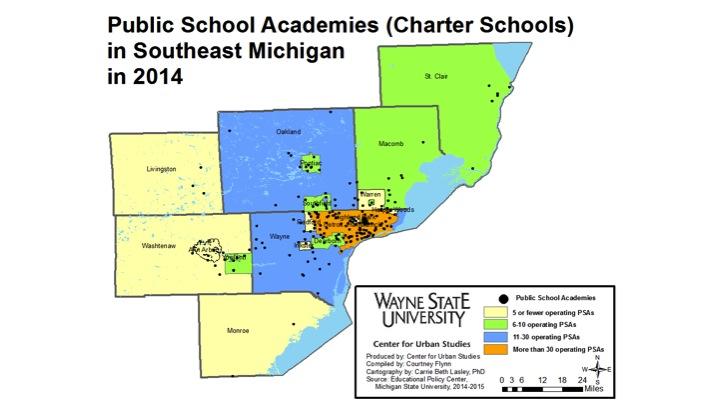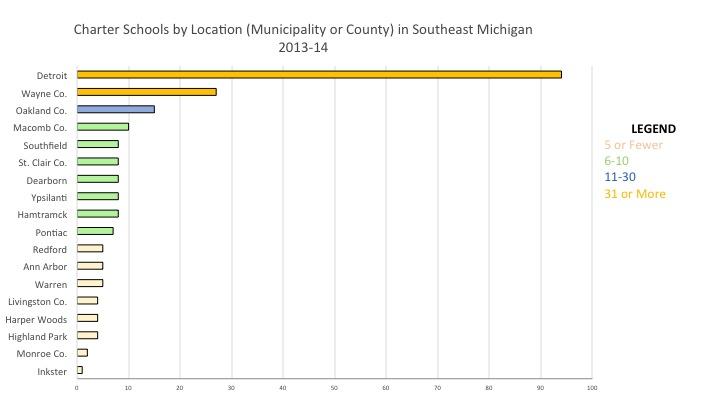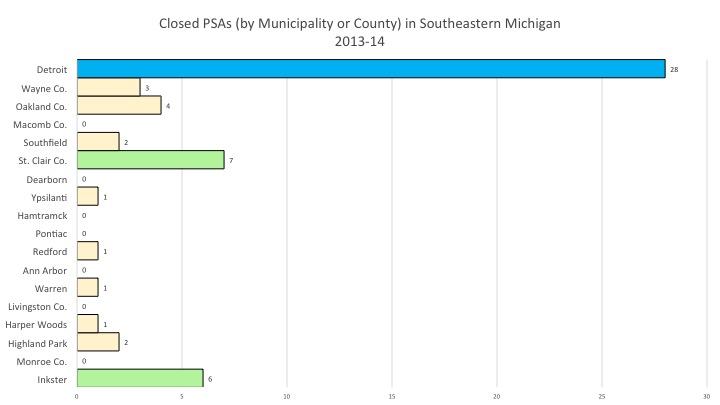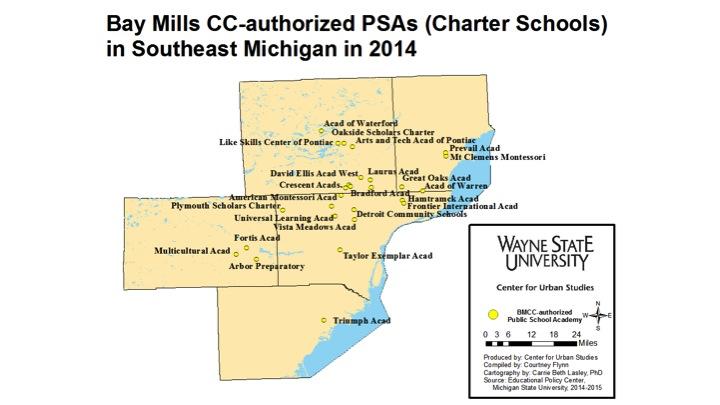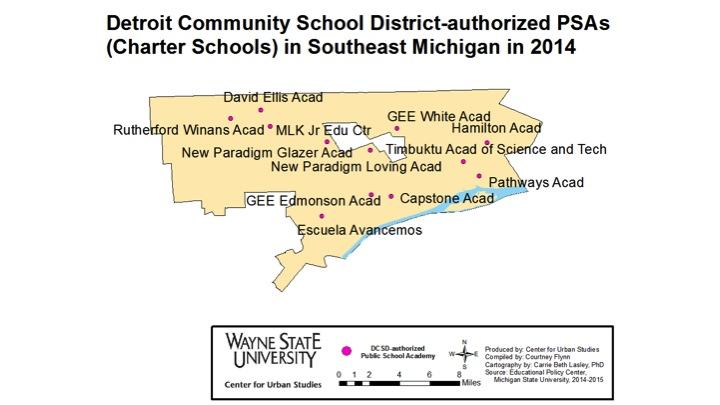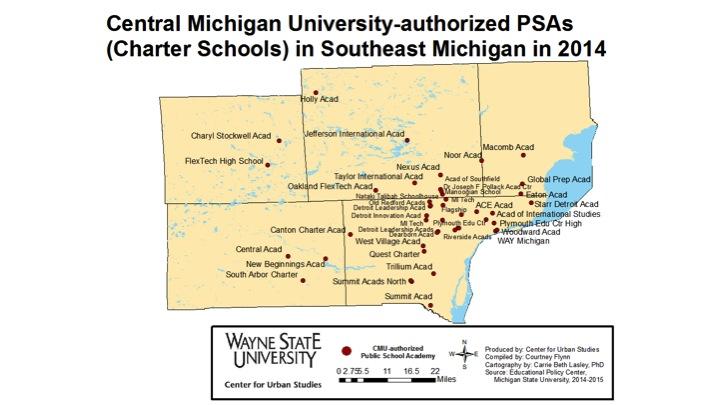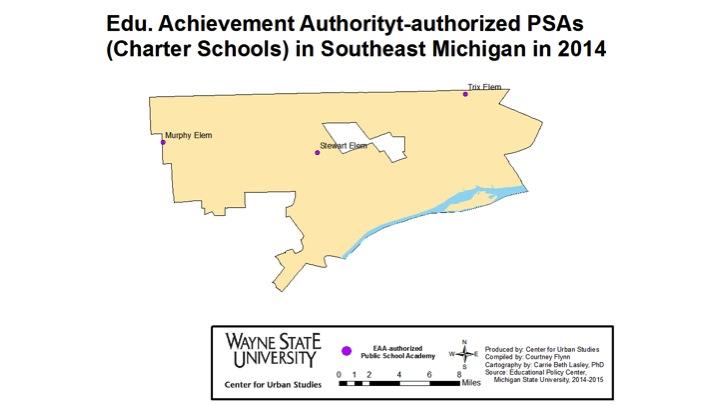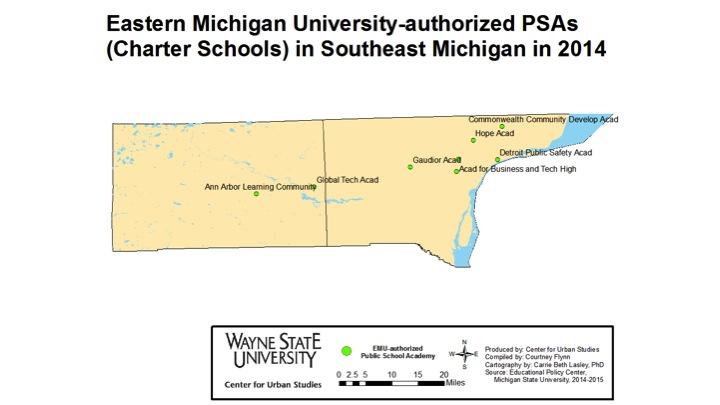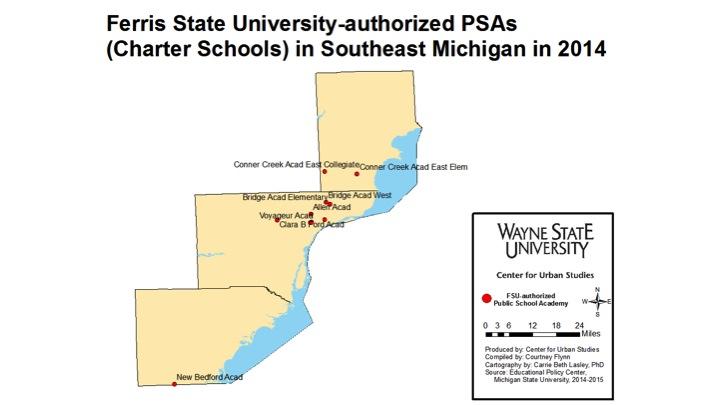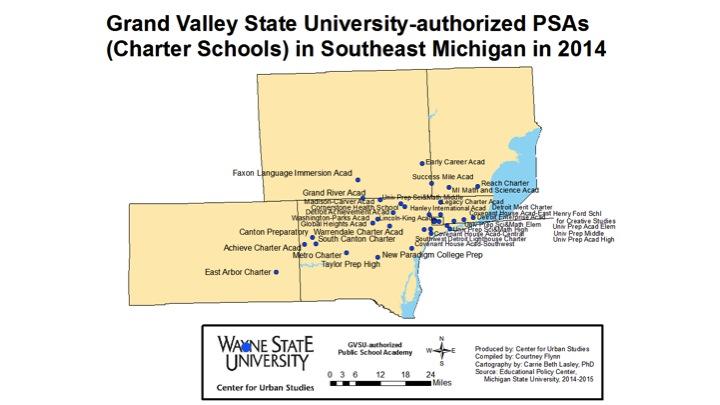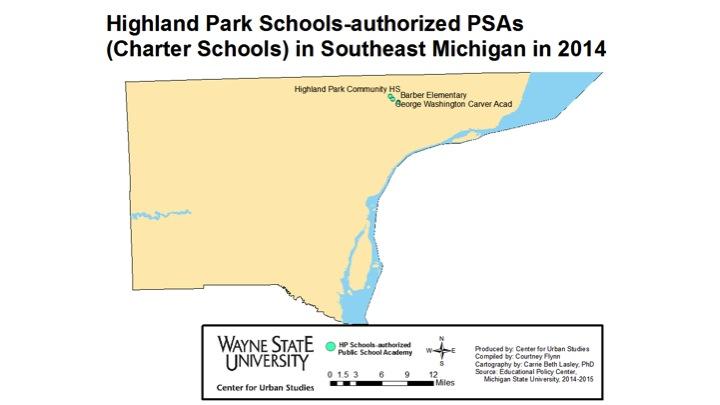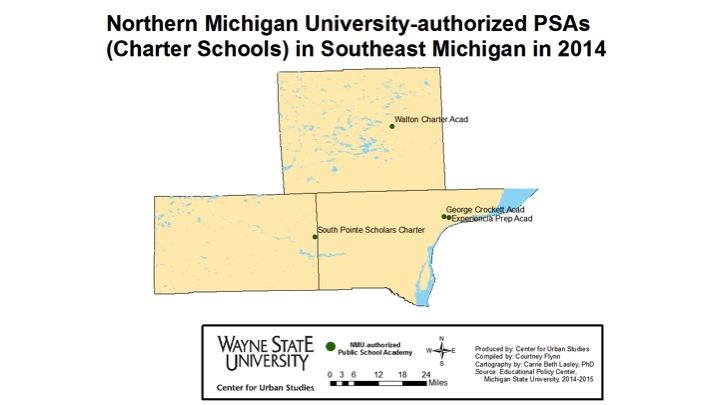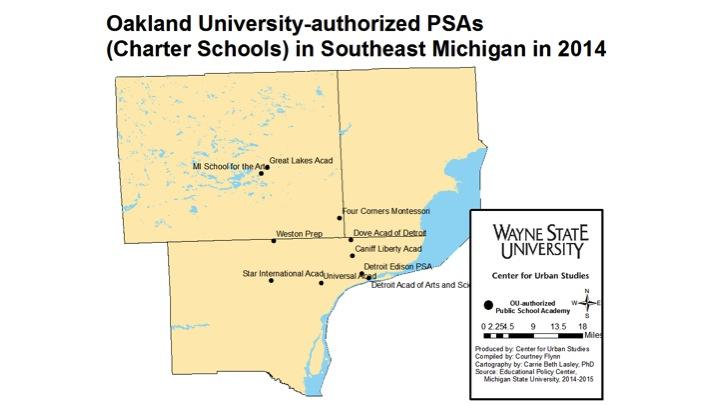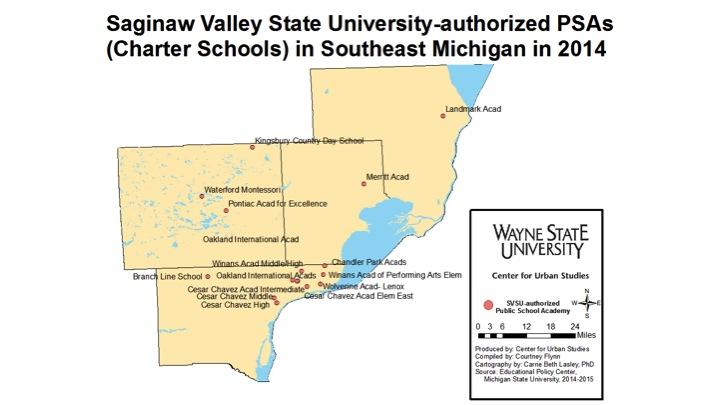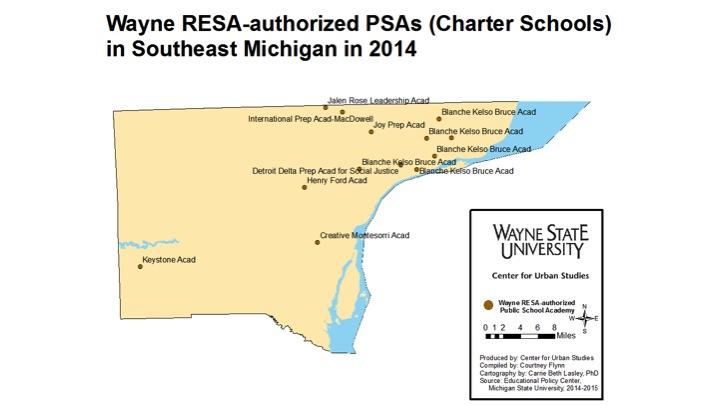In Southeastern Michigan there were 15 charter school authorizers during the 2013-14 that were included in the state’s Top-to-Bottom (TtB) list; only one of which was ranked among the best (above 80). The TtB list is an accountability system that ranks Michigan schools based on student performance in math, reading, writing, science, social studies and graduation rates (24 total charter school authorizers were included throughout the state). This list allows for schools to be compared on the same scale, regardless of size. The charts below presents each authorizer’s portfolio as a single entity, rather than by individual schools, by a methodology developed by the Michigan Department of Education’s Bureau of Assessment and Accountability. Like schools and districts throughout the state the charter school authorizers are ranked on a scale of 1-100, 100 being the highest ranking.
It was the Washtenaw Intermediate School District (ISD) that ranked at 85, being the only charter school authorizer to rank above 80 in the region. The only other charter school authorizer to even rank of above 50 in the region was Wayne Regional Education Service Agency (RESA), which ranked at 52.
The Educational Achievement Authority, which authorizes several schools is the city of Detroit (click here for locations) was ranked the lowest authorizer in the region and among the lowest in the state with a ranking of 1 (Kellogg Community College and Muskegon Heights School District also received a 1).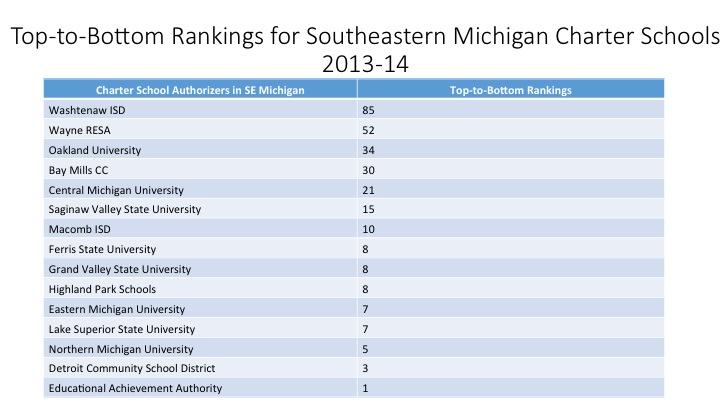
The Overall Performance Index uses an achievement index, which is a weighted average of two years of achievement data, and achievement gap index, which is a weighted average of two years of top/bottom 30 percent of students’ achievement data, according to the 2014 Michigan’s Charter School Authorizer Reporter. The negative scores show that authorizers whose performance index fell below the state average.
The only two authorizers that performed above the state average in the region were the Washtenaw ISD and Wayne RESA. The Washtenaw ISD ranked the third highest for its performance index score (.91) among the 24 authorizers. On the other end the Education Achievement Authority (-1.74) and the Detroit City School District (-1.57) ranked among the lowest authorizers, both in the region and throughout the state. The Muskegon Heights School District (-1.83) and Kellogg Community College (1.75) had the lowest performance index scores in the state.
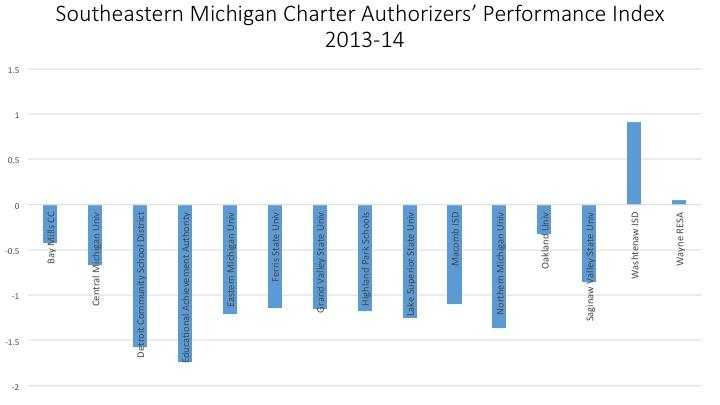
An achievement gap smaller than the state average is represented by a positive number and means that students in the top 30 percent of state standardized test scores perform at levels closer to the bottom 30 percent, according to Michigan’s Charter School Authorizer Report. It has also been described as the performance gap in a subject between the top 30 percent and bottom 30 percent of a student body. A positive number means that gap is smaller than the state average and a negative gap means that number is larger than the state average.
The achievement gap accounts for 25 percent of the TtB rankings and below we see that six of the authorizers with charter schools in the region have an achievement gap smaller than the state average. Authorizers with small achievement gaps, such as the Education Achievement Authority and Highland Park City Schools, are more likely to have a concentration of low or high proficiency rates, according to Michigan’s Charter School Authorizer Report.
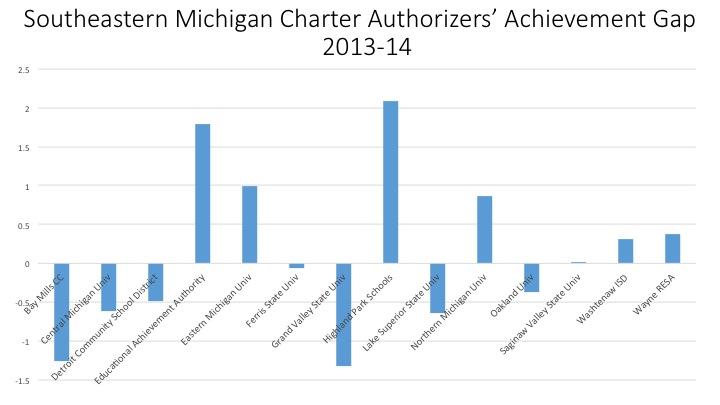
In the five charts below we see the percentage of students deemed proficient on the 2013 Michigan Education Assessment Program for the five subject areas students are tested on (math, reading, writing, science and social studies). The authorizers represented above all had charter schools existing in the region during the 2013-14 academic year. The Washtenaw ISD was the only authorizer in the region with students outperforming the state in all subject areas. Wayne RESA was the only other authorizer in the region with students outperforming the state on the 2013 MEAP; this authorizer outperformed the state average in reading.
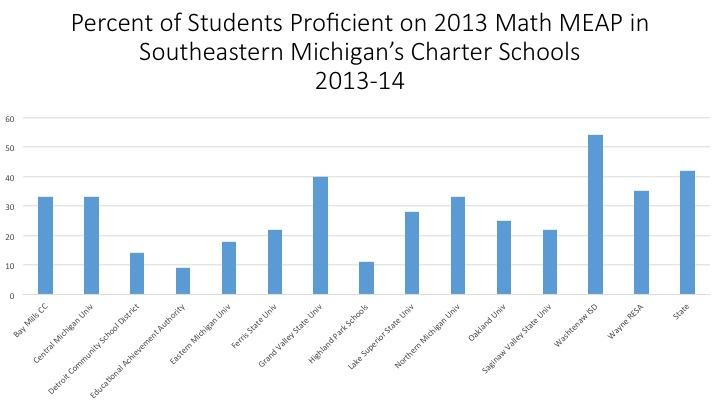
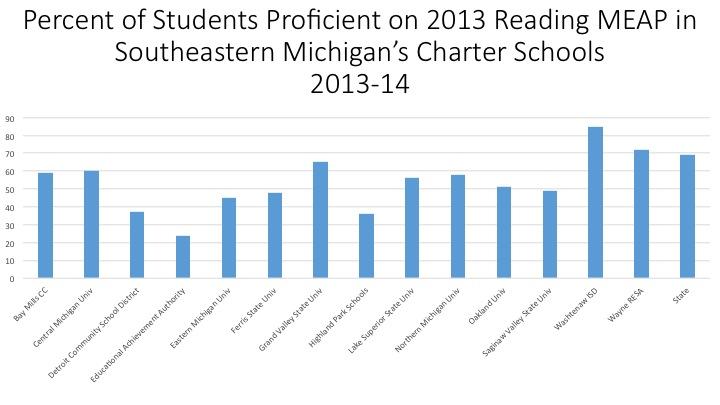
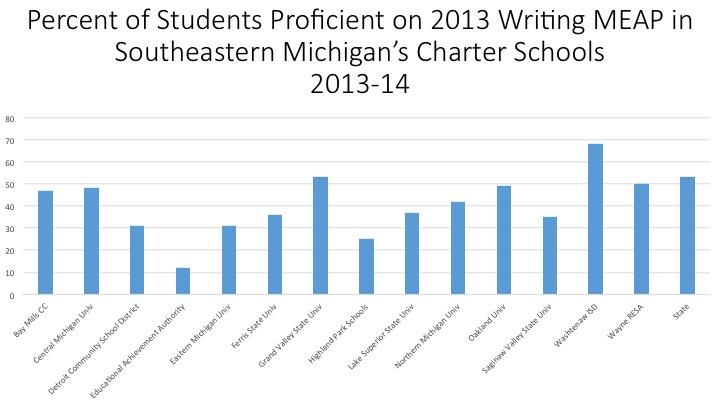
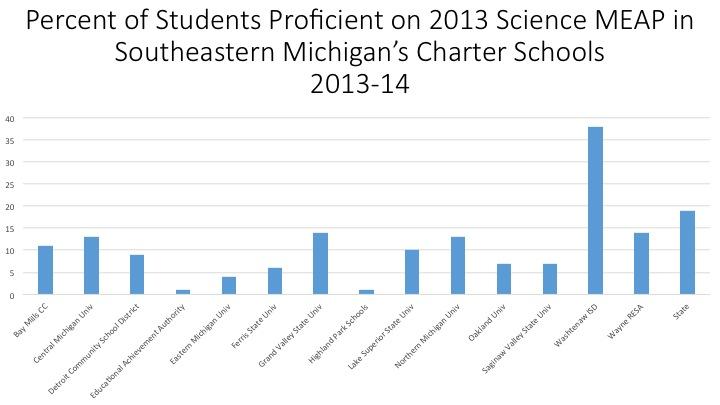
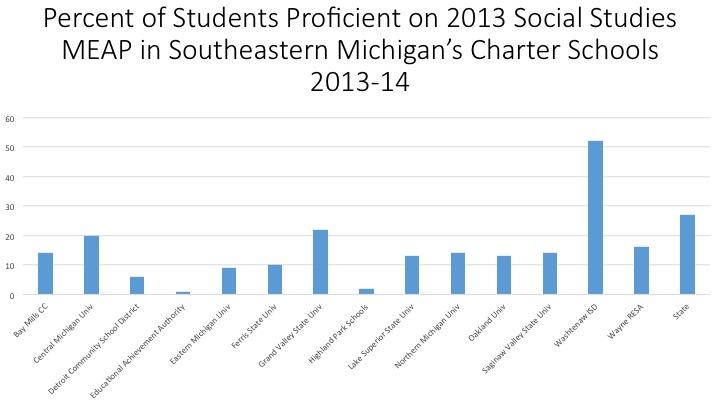
The Detroit Community School District had the highest percentage of economically disadvantaged students at 88 percent. Eighty-five percent of students in the Highland Park, Educational Achievement Authority and schools authorized by Saginaw Valley State were economically disadvantaged. Schools authorized by Northern Michigan University had the lowest percentage of economically disadvantaged students at 27 percent.
The Michigan Authorizer report references the correlation between poverty and the percentage of African American students to proficiency rates on state standardized tests. There were no authorizers with schools in the region where more than 10 percent of the student population was economically disadvantaged that ranked above 50 on the TtB list.
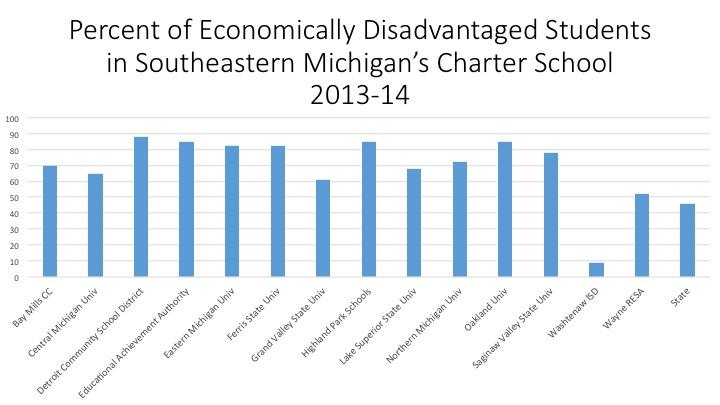
When reviewing the above information with our previous post we know that majority of charter schools in the 2013-14 academic year in the region were located in the City of Detroit and that the city also had the highest number of closed charter schools at 28. Additionally, we know Central Michigan University had the largest number of schools closed in the region. Although Central Michigan University didn’t rank lowest on the TbT list, it didn’t rank high. With a TbT ranking of 21 Central Michigan’s MEAP proficiency rates were all below the state average (9% below state average for math and reading; 5% below the writing average; 6% below the science average; 7% below the social studies average). Central Michigan University was 19 percent above the state average for economically disadvantaged students.
Of the authorizers with schools in the city only Wayne RESA had students outperformed the state standard, and that was in math. Still, when only looking at authorizers in the city of Detroit Wayne RESA had the largest number of shuttered charters at 8.
While standards for Michigan charter schools have gained more attention in recent years, the above information highlights that the charter school authorizers in the region fall below state standards when it comes to educational assessment. Former State Superintendent Mike Flanagan did say the state would suspend charter authorizers if they did not offer “high quality education options and cultivate better outcomes, especially for low income children.”
In June of 2014 it was announced that 11 charter authorizers were at risk of being suspended by the Michigan Department of Education. These authorizers were: Detroit Public Schools, Eastern Michigan University, the Education Achievement Authority, Ferris State University, Grand Valley State University, Highland Park Schools, Kellogg Community College, Lake Superior State University, Macomb Intermediate School District, Muskegon Heights Public Schools and Northern Michigan University. In 2015, 7 of those authorizers were removed from the list; those remaining are: Detroit Public Schools, the Education Achievement Authority, Highland Park Schools and Eastern Michigan University. What qualifications those authorizers had to meet to be removed from the list are unknown though, according to a Free Press article.
